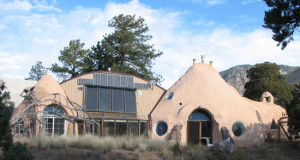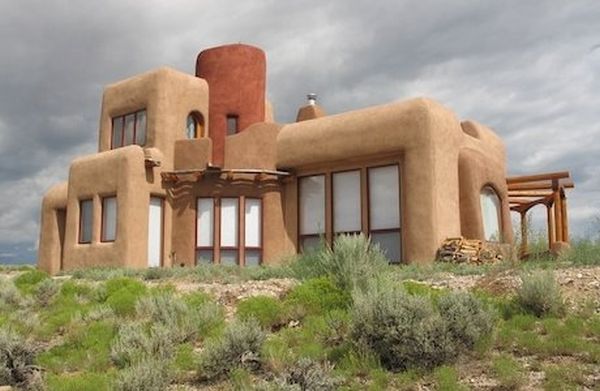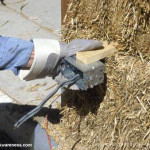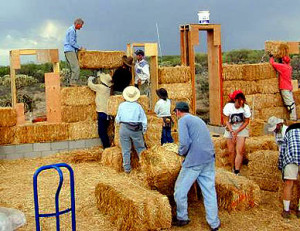 Straw bales were a fairly common building material in the world between 18
Straw bales were a fairly common building material in the world between 18
There remains much we do not understand about appropriate ways to build with straw bales in different individual building assemblies, climate zones, and weather conditions. Two of the current straw bale construction methods include non-load-bearing or post-and-beam, which uses a structural framework with straw bale in-fill, and load-bearing, which uses the bearing capacity of the stacked bales to support roof loads.
1800 and 1940. Boom in straw-bale home construction began to re-interest people in the mid-1960s. The biggest interest in this building technique started when the cost of conventional construction materials raised, and people started to have concern about our environment. Straw ball houses have become popular among enthusiastic people interested in living in Eco homes.
Super Insulated. Solar heating and cooling, passive solar design and solar tempering is less an issue when the house is superinsulated. Properly done, superinsulation (with accompanying sealing), greatly reduces the total amount of heat required from solar and supplemental sources. A poorly insulated house could use huge banks of south facing windows and accompanying thermal mass to provide part of the enormous heat requirements. With the well build straw bale (superinsulated house), solar measures can be modest and get the job done. If the plan looks too solar…maybe it is.
Straw Bale Module. Most plans are based on either a 3 foot (two string) or 4 foot (three string) bale module, with design decisions (outside wall dimensions, window size and placement for example)  strongly influenced by this module. Most plans can be designed and built using either three or four tie bales (with window size and placement modified accordingly). A 12 foot wall section for example, can be constructed with 4 three foot bales, or three 4 foot bales. In the real world of straw bale home building, the bale module often gets ignored for other considerations.
strongly influenced by this module. Most plans can be designed and built using either three or four tie bales (with window size and placement modified accordingly). A 12 foot wall section for example, can be constructed with 4 three foot bales, or three 4 foot bales. In the real world of straw bale home building, the bale module often gets ignored for other considerations.
Load Bearing Option. Generally, the smaller and simpler the plan, the more likely one has the option of using load bearing construction (which may be less expensive). As size and complexity increase, it becomes more likely that post and beam construction will be required. Often, a hybrid system is possible, with post and beam or stick construction on the south wall (with more windows), load bearing on the north wall (assuming few and small windows), and maybe a center suport post and beam system.
Symmetry. Many factors influence house design including for example, education, class, custom, intuition, art, science, tradition, culture, code, (you name it). Within these constraints, designers have the opportunity to bring something personal to their work. Symmetry is a theme that runs throughout mine. My underlying assumption is, if a plan looks good (to me), feels good, works well, in plan, energy will generate and flow well, and the house will be enjoyable to live in. For me, in most cases, this means symmetry. The shape, the footprint is the starting place for me, with use areas expected to fit into this matrix. In most cases, use areas gracefully adjust, in respect to the overall form. Obviously, there are other ways to design a house…




